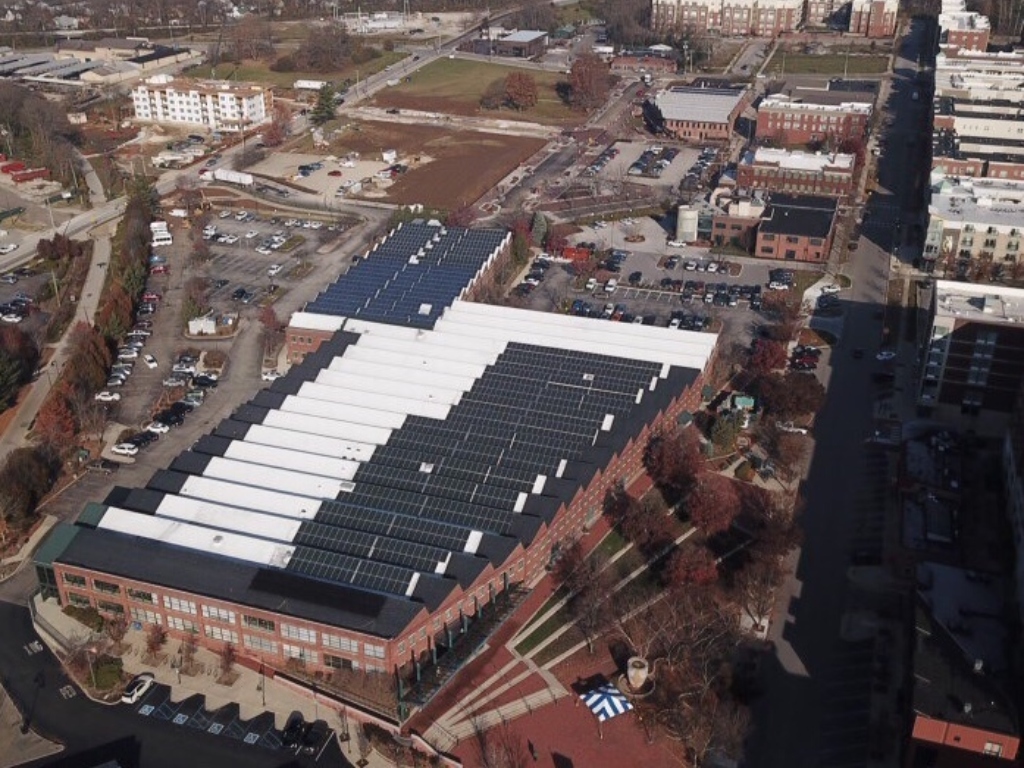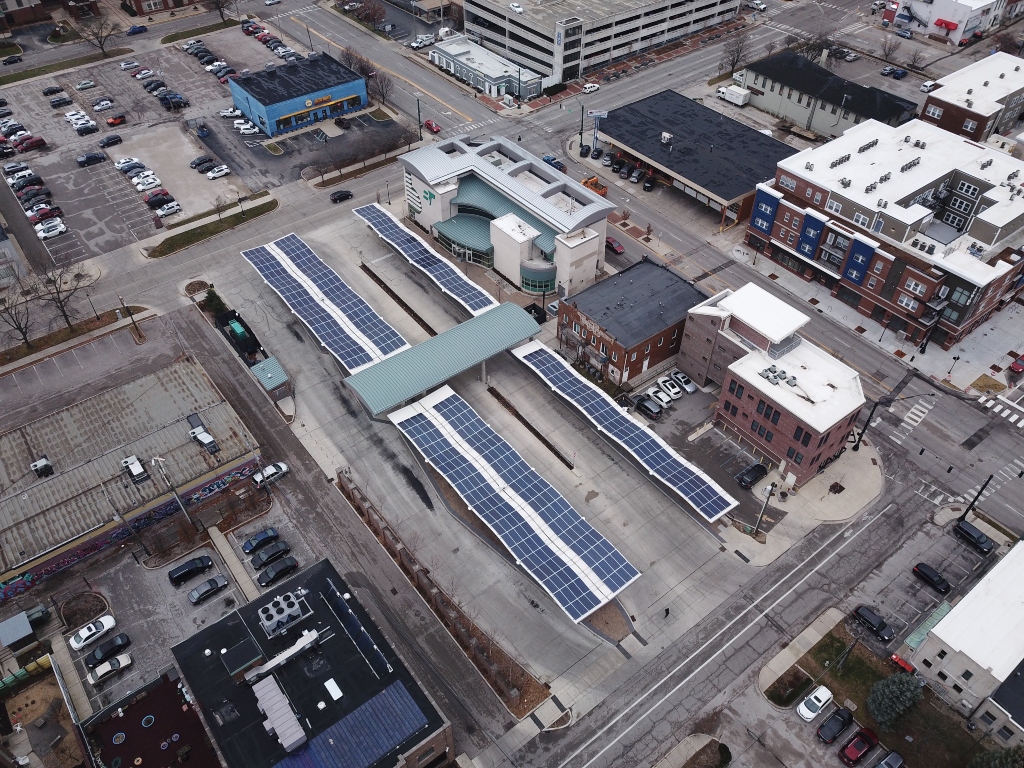City Government Solar Installations
The City created its budget and approach in the RFP response and the subsequent contract. The criteria for choosing the contractor were the quality of deliverables, qualifications and experience, the capacity to implement the GESC, and project management. The Controller’s Office served as the point of contact with the banks and for any funding decisions.
Bloomington chose Energy Systems Group from the RFP process. Energy Systems Group worked with the Utilities, Parks and Recreation, and Public Works departments, to identify solar panel locations, costs, expected energy production, and how to meet the GESC requirements of meeting energy savings. Ultimately, the City and the contractor determined suitable sites on municipal facilities throughout Bloomington at multiple locations (see the solar installation map). Given the SB 309 timeline, the City worked to complete and connect its solar installations to the grid before the end of 2017.
Since the City was using a GESC, the contractor was responsible for physically installing the solar panels and managing the project. The City's role was to communicate with the contractor throughout the project to ensure compliance with project requirements.
As the projects were being installed, some of the planned locations had to be changed due to unforeseen installation difficulties, additional costs, and issues producing the amount of energy that was anticipated. The changes led to a redistribution of solar panels so they could be placed in more cost-effective locations. Panel siting was done on a case by cases basis, depending on roof slope and orientation.
Residential Solar Installation
In collaboration with the City, the Solar Indiana Renewable Energy Network (SIREN) – a project of the local nonprofit, Center for Sustainable Living – developed a program called Solarize Bloomington to accelerate the adoption of residential solar energy. Every year, SIREN issues an RFP for companies to install solar. Based on the RFP, SIREN then selects a contractor who offers volume pricing to consumers to drive down the cost of installation. Whole Sun Designs, a local company, has been a partner for several years and has grown significantly as a company during that period, in part because of this program.
The City of Bloomington and SIREN jointly funded Indiana Solar for All to help fund installations for people who are traditionally unable to afford the upfront cost of solar. The program assesses a small surcharge on each watt to help lower-income residents afford solar. Participating residents volunteer on solar installations in exchange for a reduced cost on their own solar panels. As of early 2020, 14 households have participated in the Indiana Solar for All program.
The City and SIREN collaborated by issuing joint press releases, mailing announcements in municipal water bills, and putting announcements on social media and in local newspapers to attend information sessions. These announcements direct residents to register online for an in-person meeting. At the meetings, residents hear a 20-minute presentation about the value of going solar and about the volume pricing discounts through the Solarize program. The meeting presentations are given by SIREN volunteers, and a staff person from a selected contactor is present to cover technical details. After the meeting, interested participants are asked to complete a form with information about their average energy use.
Funding
City Facilities
The City used a GESC to finance their solar installations. The face value of the lease is $12,959,301. However, the amortization schedule, which includes interest, has total payments over the life of the rent-to-own lease at $17,456,983. Bloomington will pay off the amount using the energy savings from solar energy under the terms of the GESC.
Residential
The Economic and Sustainable Development Department provides about $1,000 annually for printing water bill inserts. Costs incurred by SIREN have been less than $1,000 annually for printed materials, advertising, info-tube holders and yard signs, which are placed at homes that have recently installed solar. The costs for SIREN were paid with donations.
Timeline
The City began looking at the viability of a GESC project in 2016, and the solar project got underway in 2017. The first phase of the project was completed later that year. The City is engaged in ongoing efforts to add more solar installations in Bloomington.
Solarize Bloomington offers multiple information sessions from March through November each year, and the program was still operating as of fall 2019.





